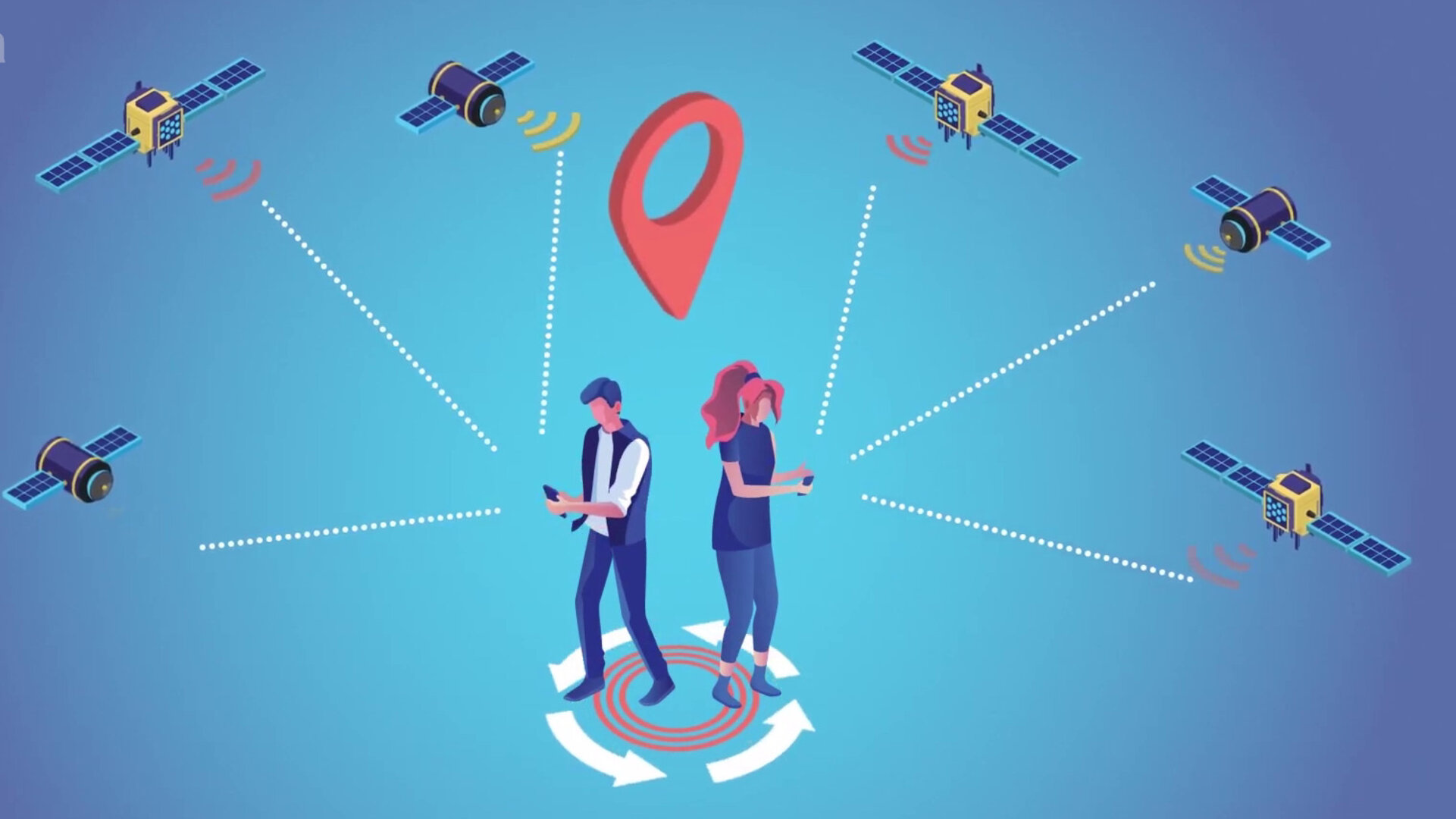Galileo becomes faster for every user
ESA satnav receiver vans – driving between the busy heart of Rotterdam, quiet countryside, and the Agency’s ESTEC technical centre – have confirmed that Galileo signals now provide a first position fix more rapidly, while also offering improved robustness in challenging environments and streamlined access to time information.

The improvement comes from a new so-called improved ‘I/NAV’ navigation message, first demonstrated on the latest two Galileo satellites launched in December 2021 and entered into service last summer. ESA as Galileo’s System Design Authority has been contributing to the deployment of the improved ‘I/NAV’ navigation message starting from the design phase, the implementation at satellite and ground segment, the qualification of the implementation and the in-orbit testing.
Galileo’s service provider, the European Union Agency for the Space Programme, EUSPA has now upgraded all other Galileo FOC satellites in service so as to broadcast this enhanced navigation message.

This upgraded navigation message does improve Galileo’s time to first position fix by a factor of two or three – depending on whether the receiver is in rural or more challenging urban environments.
This is made possible by improving the message’s capability to correct for decoding errors and to recover lost data. At the same time receivers can gain also faster access to the ultra-precise Galileo System Time without having to decode the entire navigation message.

ESA has been using its Galileo Time and Geodetic Validation Facility – an independent network of monitoring stations around the globe – to check the correctness of the broadcast data and its related performance. Their analysis has shown that all broadcast data are correct. Also, the as-measured performance of the new data is fully aligned to the performance targeted in the design phase.
Meanwhile ESA’s Navigation Laboratory, based at ESTEC in Noordwijk, the Netherlands, has deployed its pair of Telecommunications and Navigation Testbed Vehicles in drives across the Dutch countryside to the centre of Rotterdam to confirm the performance improvements available to users in a variety of environments.

These testbed vehicles incorporate a variety of satnav receivers plus cameras and sensors to record all details of their surrounding environment.
“The Galileo signals do provide the world’s most precise accuracy, down to decimetre-scale precision,” explains Stefan Wallner, heading ESA’s Galileo G1 Signal in Space Engineering Unit.

“In order to benefit from the excellent accuracy of the Galileo system, the user has also to retrieve the corresponding navigation message from the Galileo signal even in challenging user environments – so the faster the better. In the Galileo navigation message, there was sufficient spare data capacity available to address this improvement.“
At the same time, these new elements in the ‘I/NAV’ message have to be entirely backward compatible with legacy receivers, so that the update has no impact on their functioning and performance. Before the start of the deployment, ESA in cooperation with EUSPA and EC’s Joint Research Center (JRC) did intensive test campaigns covering an extensive number of commercial Galileo receivers and successfully demonstrated that the new I/NAV message does indeed not have any negative impact on them.”
The I/NAV improvements are based on a trio of innovations.
- The improved time to first position fix comes through reducing the amount of information needed for the receiver to generate a first position fix, at the cost of a reduced initial accuracy in turn. This leads to a first fix within a few seconds, with a ranging error of less than 4.5 m, decreasing further in turn until reaching the accustomed submetre-level accuracy after the reception of the complete Galileo navigation message.
- I/NAV’s improved robustness comes from a new coding method that introduces additional redundancy into the navigation message, so any lost or corrupted data – perhaps blocked by high buildings or reflected off polished artificial surfaces – can be recovered easily.
- Finally, Galileo System Time is made available to receivers without the need to fully demodulate the navigation message by introducing it as a ‘secondary synchronisaton pattern’ within the message, accessible within a few seconds. This is of particular interest to receivers that retreive the Galileo navigation message through the internet or parallel communication networks and therefore are only missing the correct link to the Galileo System Time for the provision of a first fix.

The data gathered during this current monitoring campaign are being used to implement a set of recommendations to chipset manufacturers to maximise their effectiveness use of I/NAV signals.
All information necessary to implement and benefit from I/NAV message improvement can be found in the Galileo Open Service Signal in Space Interface Control Document. The next version of the Galileo Open Service Definition Document will also provide a characterisation of the expected performance to be obtained from the improved I/NAV message.

About Galileo
Galileo is currently the world’s most precise satellite navigation system, serving four billion users around the globe since entering Initial Services. All smartphones sold in the European Single Market are now guaranteed Galileo-enabled. In addition, Galileo is making a difference across the fields of rail, maritime, agriculture, financial timing services and rescue operations.
Galileo is a flagship programme of the European Union, managed and funded by the European Commission. Since its inception, ESA leads the design, development and qualification of the space and ground systems, as well as procuring launches. The EU Agency for the Space Programme (EUSPA) acts as the service provider of Galileo, overseeing the market and application needs and closing the loop with users.
For more info about Galileo: https://www.usegalileo.eu/EN/.


Access the video


